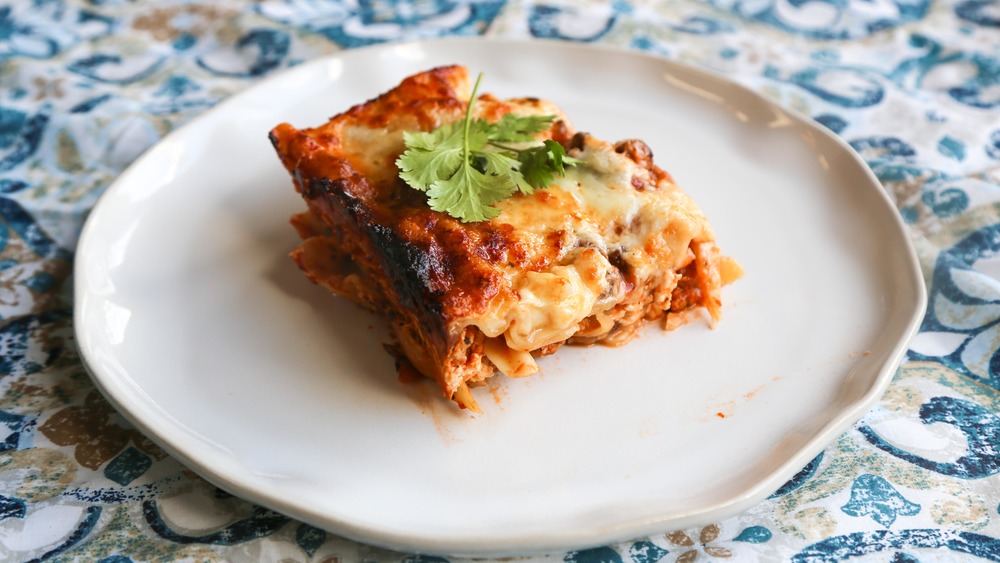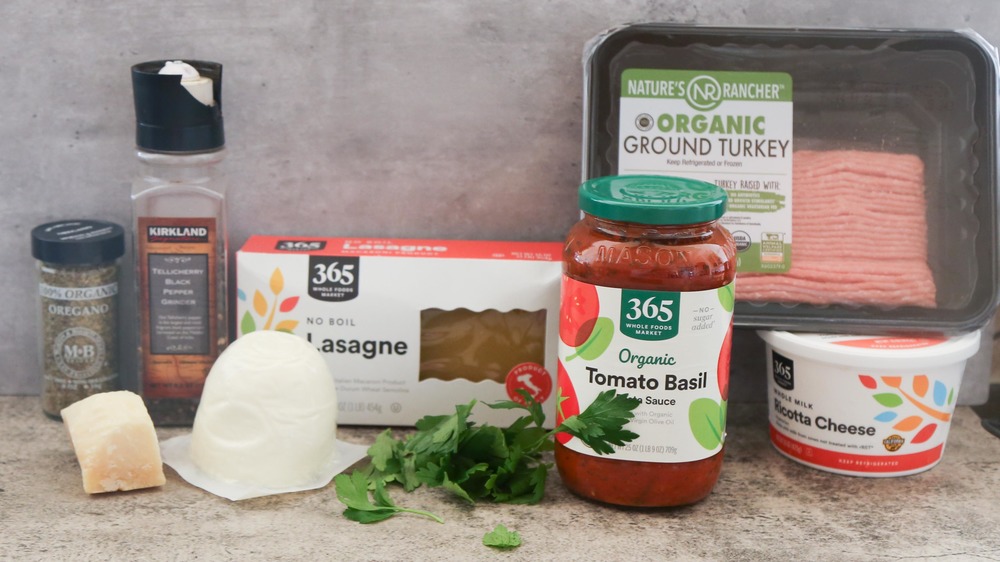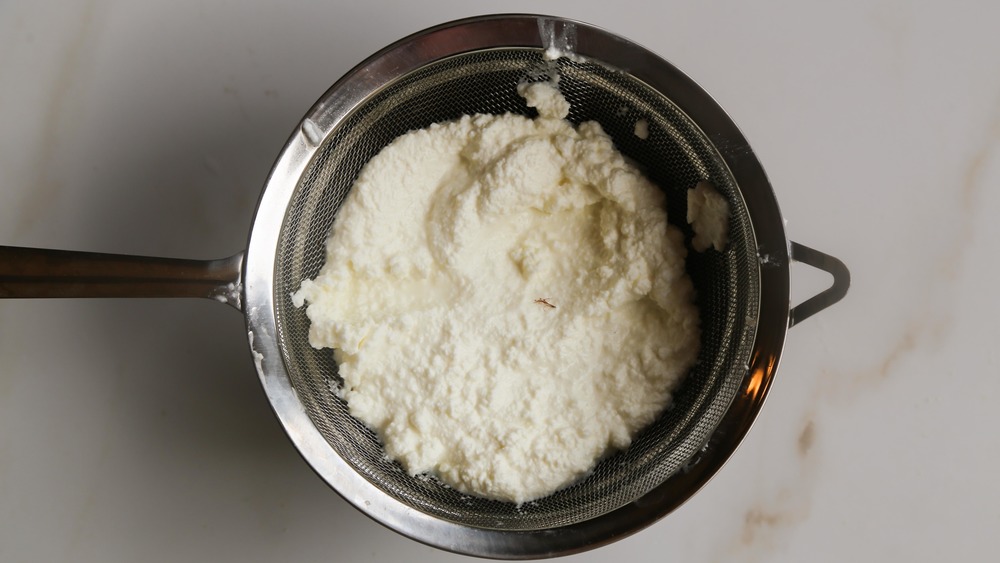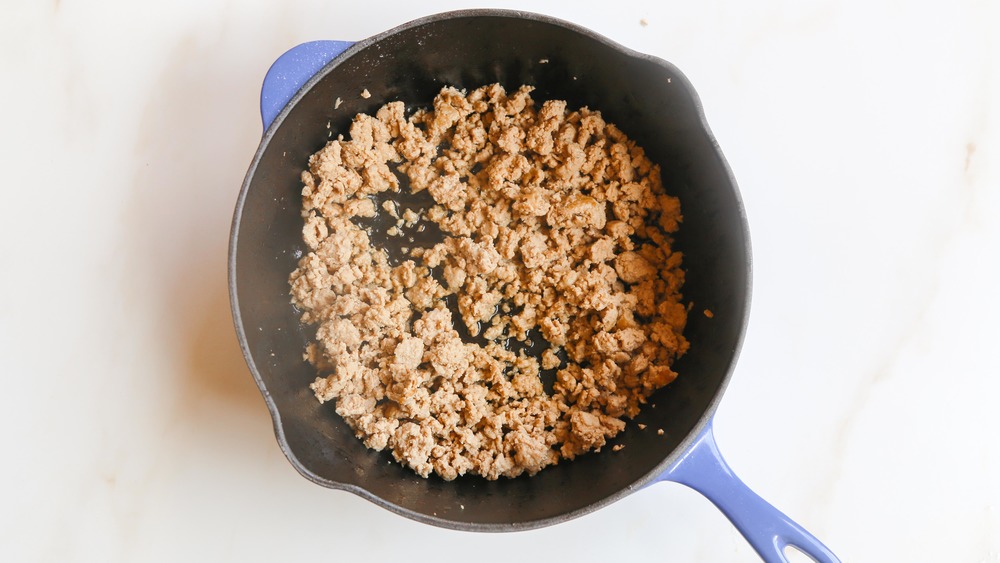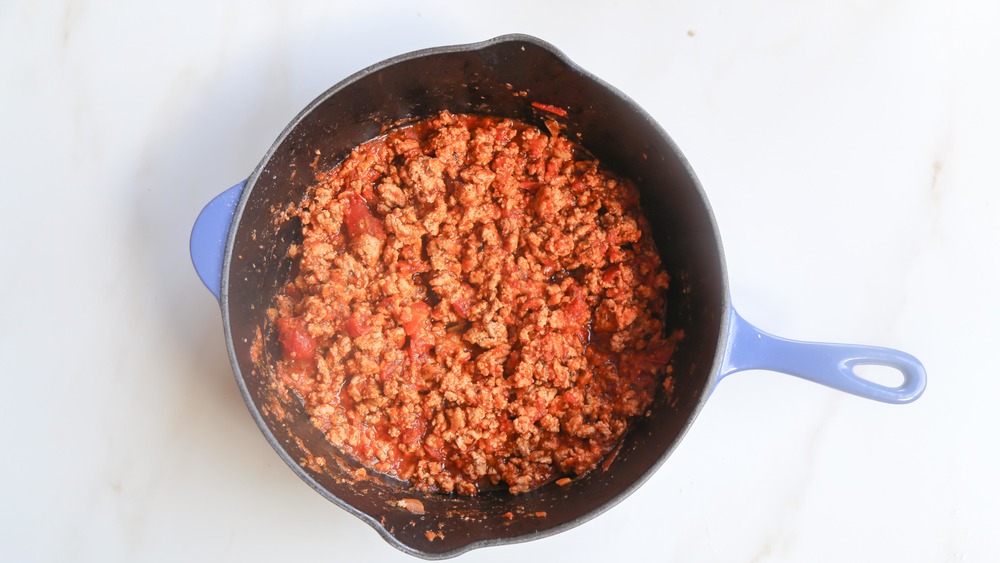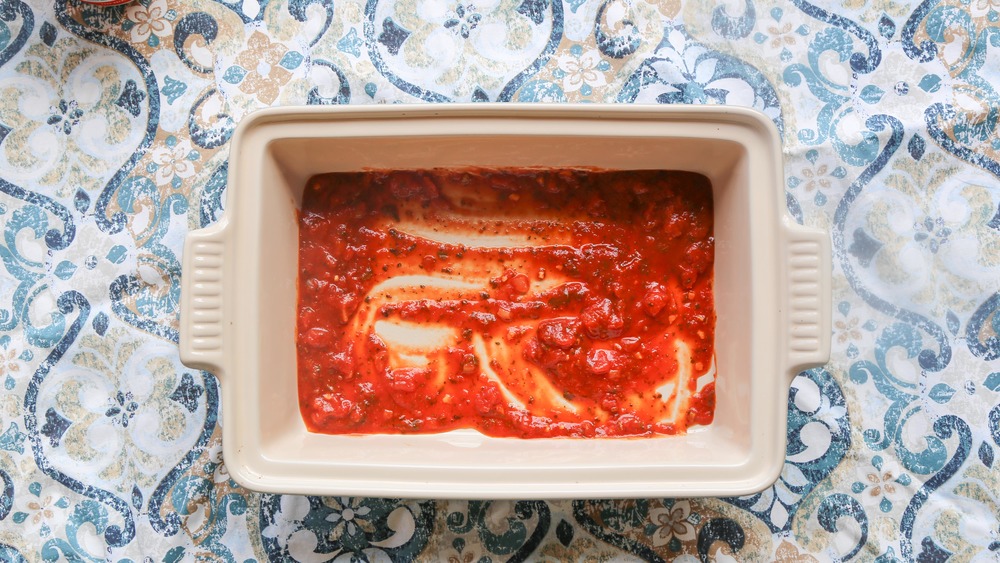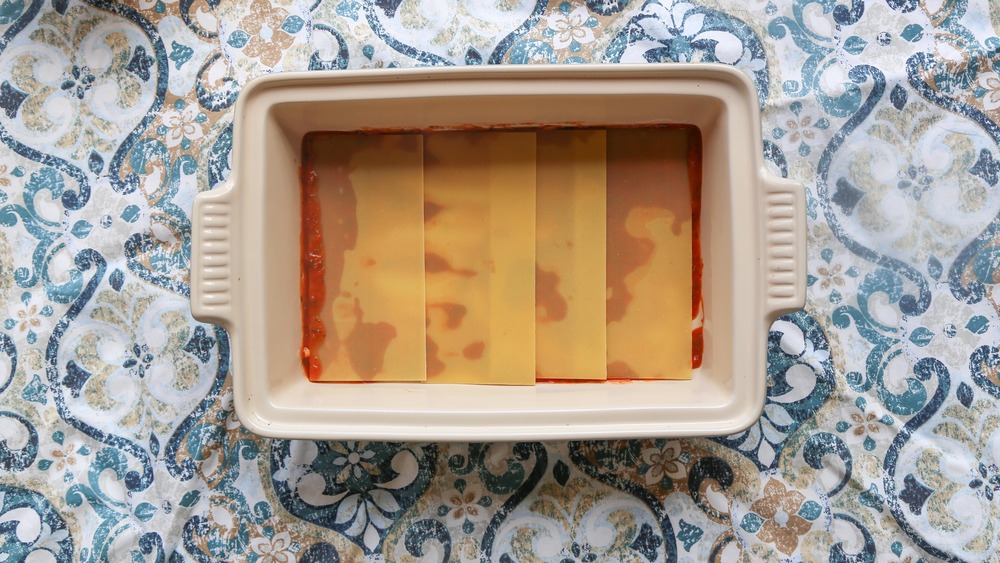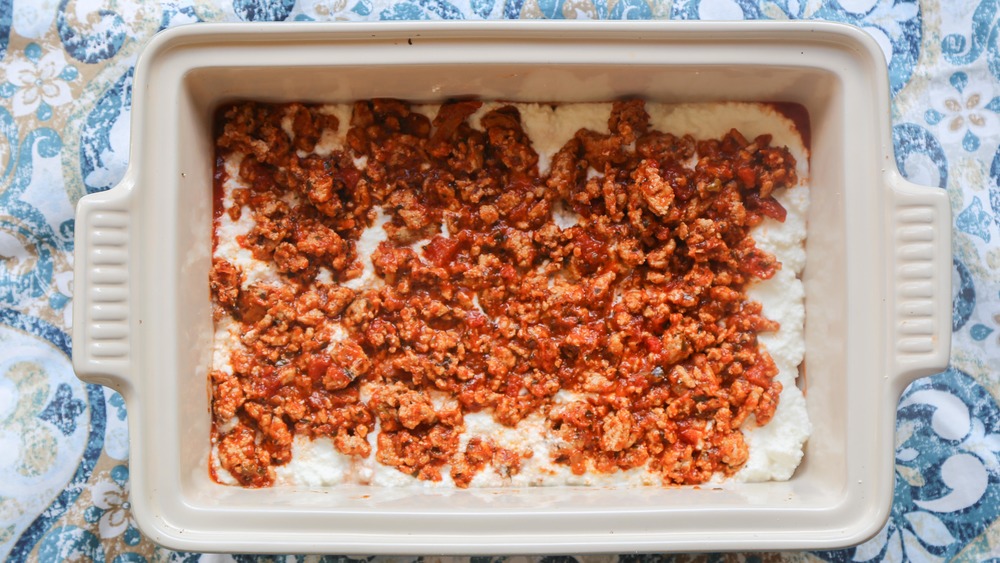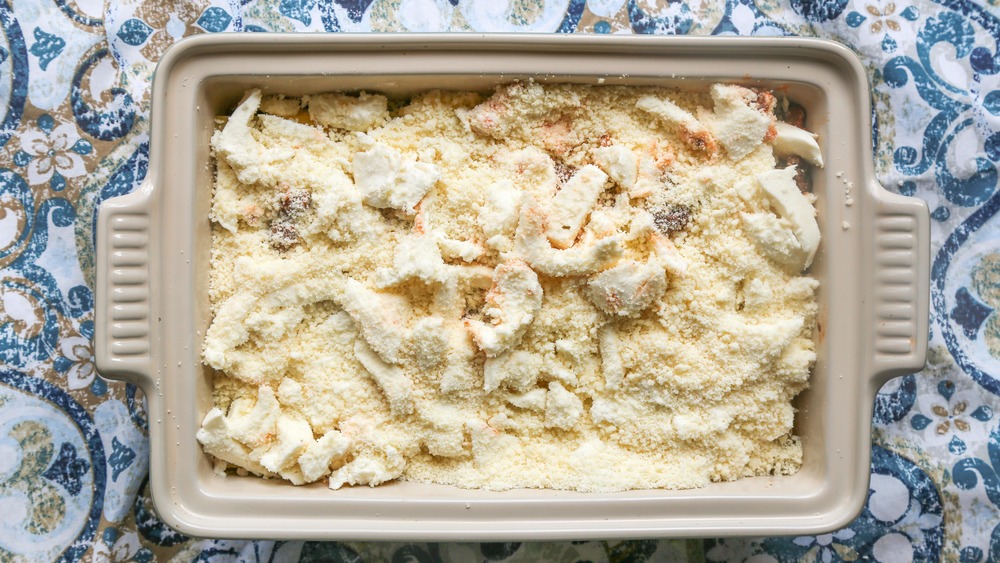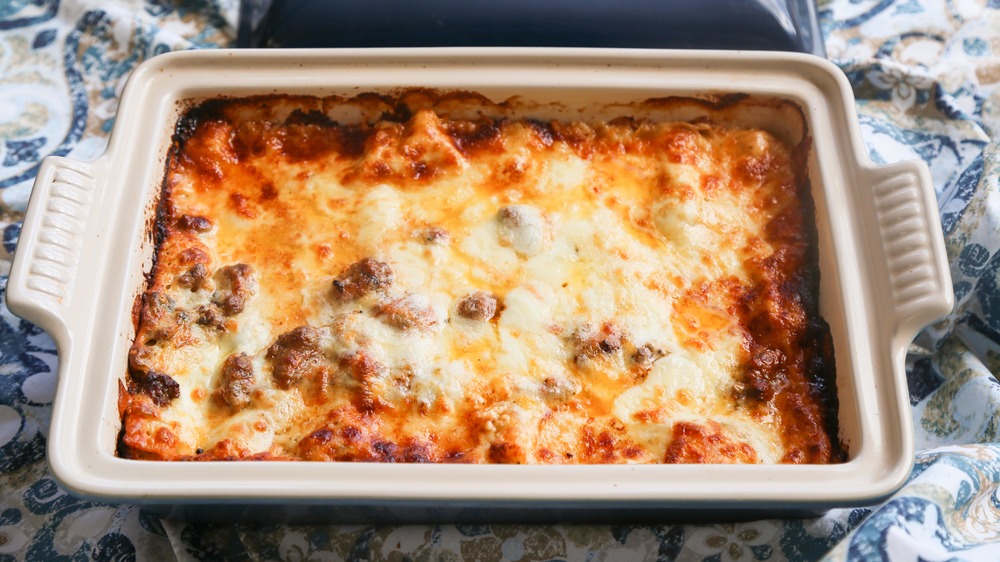Easy Lasagna Recipe
Lasagna is a reliable comfort food, but it can be intimidating to cook at home. How do you ensure the noodles are the perfect amount of cooked? How much do you add to each layer in order to get the perfect ratio of meat, pasta, and cheese in every bite?
This lasagna recipe from Eating Works creator and certified chef Maren Epstein is simple to follow and provides detailed instructions for layering, with a result that makes for a flawless removal of lasagna from the pan. No -cook lasagna noodles are your pal in this scenario. They take the guess work out of how long to cook the lasagna in boiling water in order for it to not then be overcooked by the time it comes out of the oven in lasagna form. You can also use traditional noodles, though, if you're a lasagna purist. Cook them in salted boiling water as directed on the package to al dente, since they will soften in the oven.
This lasagna recipe will serve about six people, and is restaurant-worthy quality.
Gather the lasagna ingredients
First, make sure you've got all the ingredients for this easy lasagna ready to go. You don't want to start assembling the lasagna layers, and then realize you've only got half the amount of cheese you need.
This lasagna recipe calls for extra virgin olive oil, ground meat (can be beef, turkey, or even chicken, if you want to get unconventional), pasta sauce (choose your own favorite brand), dried oregano, fresh parsley (the stems should be removed), no-cook lasagna noodles, ricotta cheese, whole mozzarella cheese, and fresh, grated parmesan cheese.
After you prep all the ingredients, arrange a rack in the middle of the oven and preheat to 450 degrees Fahrenheit.
Drain the ricotta cheese for the lasagna
Before you start assembling the lasagna, there is an extra step of prep work you need to do with one of the cheeses. The ricotta cheese is the one that you'll layer throughout the lasagna (the other cheeses are not added until the very end). The ricotta should be dumped into a strainer and drained over a bowl prior to being added to the lasagna.
Ricotta tends to have a watery excess that doesn't need to be layered in with the meat, sauce, and cheese because it will affect the taste and appearance of your final Italian masterpiece. Epstein explains, "The moisture in the ricotta causes the lasagna to fall apart."
So if you want lasagna that's cohesive with those beautiful, perfectly stuck together layers, take the time to drain 'n strain your ricotta first.
Brown the ground meat for the lasagna
No matter the meat you're using for this lasagna recipe, it needs to be browned in a skillet on the stove prior to being layered into the lasagna. Heat the olive oil over medium heat, then add the ground meat, and season it with salt and pepper to taste. You should cook it until it is evenly browned on all sides, about eight minutes.
Most lasagnas utilize pork or beef, but Epstein opted for turkey because she wanted to make it lighter. She claims, "I used ground turkey instead of beef. No one even knew the difference!"
A lack of a cast iron skillet in your kitchen isn't a deal breaker for this lasagna recipe but Epstein does strongly suggest it. According to her, "You don't have to use a cast iron skillet but I do like the way the food tastes when I cook it in cast iron."
Add pasta sauce to the skillet
Once the meat is evenly browned on all sides, it's time to incorporate the herbs and pasta sauce. Add the dried oregano to the skillet, followed by the jar of pasta sauce (sans the 1/4 cup the directions say you should set aside for later). Stir thoroughly until the sauce and oregano are well combined with the browned ground meat.
What kind of pasta sauce should you use? Marinara is always a safe bet for traditional lasagna. "I like using marinara sauce for this recipe," says Epstein. "You can always add some extra oregano to bump up the flavor of a jarred sauce. And of course you can make your own marina sauce for bonus points."
After you've fully combined the meat, sauce, and oregano, let the mixture simmer over medium heat for about 15 minutes, or until the sauce is no longer watery. At the end of the simmering process, gently stir in the fresh parsley (with the stems removed).
Prepare the baking dish for the lasagna
Before you add any lasagna ingredients to the baking dish, first spread that quarter-cup of sauce you set aside over the bottom. Consider this your non-stick base layer for the lasagna. Doing this first step of layering pasta sauce in the bottom of the dish or pan ensures the lasagna won't stick when you lift it out. Skipping that layer is a common mistake people make when making lasagna, so don't forget!
If you don't have an enamel baking dish, a rectangular glass casserole dish will suffice, but Epstein does recommend enamel. Per her instructions, "An enamel baking dish is important to use. It takes longer to heat up but it distributes the heat evenly. Pyrex heats up quickly but doesn't retain the heat as well and can get hotter in some spots than in others."
It's also worth noting, the traditional 9x13 size baking dish is good, but you can experiment with what you have (if you don't have that).
Layer the first round of lasagna noodles
Now it's time to really start layering your ingredients. It's important to follow the directions for this part of the lasagna recipe carefully. There is definitely a method to the madness here. Epstein's whole aim in creating this recipe was lasagna that's easy to take out of the pan. "This lasagna was inspired by classic perfect cuts of lasagna," she says. "I wanted to create an easy recipe to make at home that will stay together when you cut into it!" Layering according to her detailed instructions is part of how you get that.
The first layer (after that initial smattering of straight sauce across the bottom of the dish) should be the no cook (or al dente boiled) lasagna noodles. They'll provide a smooth surface for that first thin layer of ricotta cheese. This will usually require around four to five noodles.
Top the lasagna noodles with a layer of ricotta, then meat
Now it's time to layer in the ricotta cheese and the meat/sauce. Top that first layer of lasagna noodles with a thin layer of the strained ricotta cheese. Spread just enough to cover the noodles and reach all sides of the baking dish. Do not blow your entire ricotta stash on this first layer, but get yourself a decent base for stacking the next ingredient.
After the bottom ricotta layer, then add about half of the ground meat and pasta sauce mixture. This first layer of meat should not be super thick. Try to spread both the ricotta cheese and meat out as evenly has possible in order to cover that first layer of lasagna noodles completely, as demonstrated in the photo here, but have enough left to stack at least one more layer of meat and cheese, respectively.
Follow lasagna layering instructions accordingly
After you've added the first layer of everything (noodles, then ricotta, then the meat 'n sauce mixture), it's important to continue to follow the recipe's layering instructions carefully. It's not as simple as, "layer and repeat," as is the case with most lasagna recipes.
You will next add another layer of noodles, then the rest of the meat, followed by a final thin layer of ricotta, and then another layer of noodles. Finally, you'll top the lasagna with the mozzarella and parmesan cheese you set aside earlier.
As previously mentioned, this method of layering helps the lasagna stay together when you extract it from the baking dish after it's been in the oven. So the final topping will be over noodles, not meat or cheese. You're gonna thank us when that hunk of lasagna glides oh-so-smoothly out of the pan.
Place the lasagna in the oven
After you've completed all of the layers and polished the lasagna off with a final covering of mozzarella and parmesan, cover the dish with aluminum foil. Place it in the oven on the middle rack, then bake for 50 minutes. After the initial 50 minutes, carefully open the oven and remove the aluminum foil covering. Bake the lasagna for an additional five to 10 minutes, so the cheese can lightly start to brown on top. Once the cheese starts to bubble and brown, remove the lasagna from the oven and let it rest for a few minutes before serving.
Per Epstein, your lasagna should serve as excellent leftovers for a few days, or months if you want to go the freezer route. She tells us, "This should last five days in the fridge but you can freeze it for up to six months. I have a frozen one in the freezer now!"
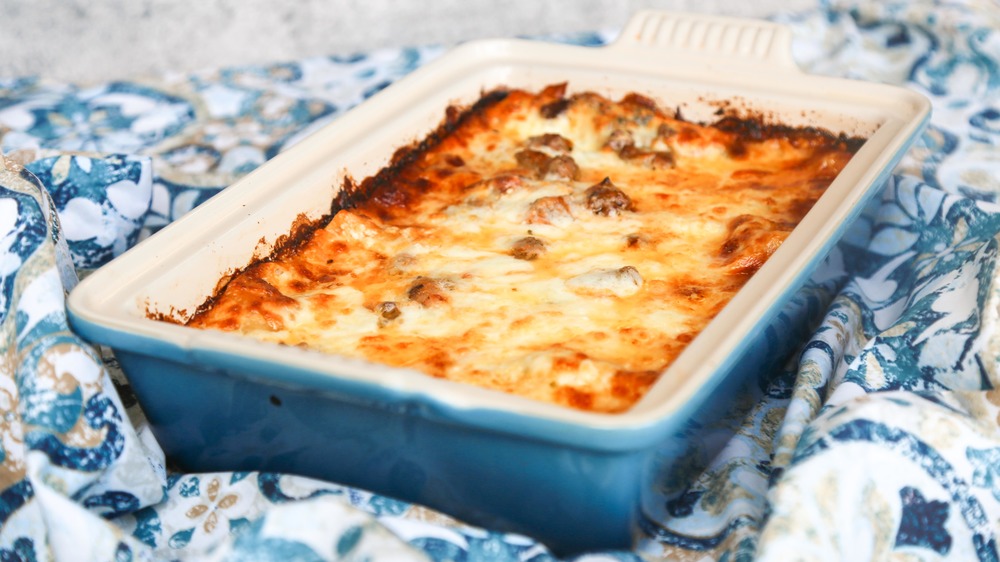
- 2 Tbsp extra virgin olive oil
- 1 ½ lb ground turkey or beef
- 1 24-oz jar pasta sauce, divided, 1/4 cup set aside
- 2 Tbsp dried oregano
- 2 Tbsp fresh parsley, stems removed
- 16-ounces no-cook lasagna noodles
- 1 cup ricotta cheese
- 8-ounce ball whole mozzarella cheese, shredded
- 1/2 cup grated Parmesan cheese
- Preheat the oven to 450 degrees Fahrenheit. Drain the ricotta in a strainer over a bowl.
- Heat the oil in a cast iron skillet over medium heat. Add ground beef and season with salt and pepper. Saute the ground meat, breaking it up until it browns evenly (about 8 minutes).
- Add the oregano and the pasta sauce. Stir and simmer over medium heat for 15 minutes, or until the sauce is no longer watery. Stir in the fresh parsley at the end.
- Spread the 1/4 cup of reserved pasta sauce over the bottom of an enamel baking dish. Next, layer 4-5 noodles, followed by a thin layer of cheese, then about half of the ground turkey (don't make it too thick).
- Add another layer of noodles, then the rest of the beef followed by a thin layer of ricotta and then another layer of noodles.
- Top the lasagna with the mozzarella and parmesan cheese.
- Cover the pan with foil and place in the oven on the middle rack and back for 50 minutes.
- Remove the foil and cook for another 5-10 minutes.
| Calories per Serving | 787 |
| Total Fat | 33.9 g |
| Saturated Fat | 14.7 g |
| Trans Fat | 0.1 g |
| Cholesterol | 143.7 mg |
| Total Carbohydrates | 68.3 g |
| Dietary Fiber | 4.9 g |
| Total Sugars | 8.9 g |
| Sodium | 1,020.1 mg |
| Protein | 51.1 g |
